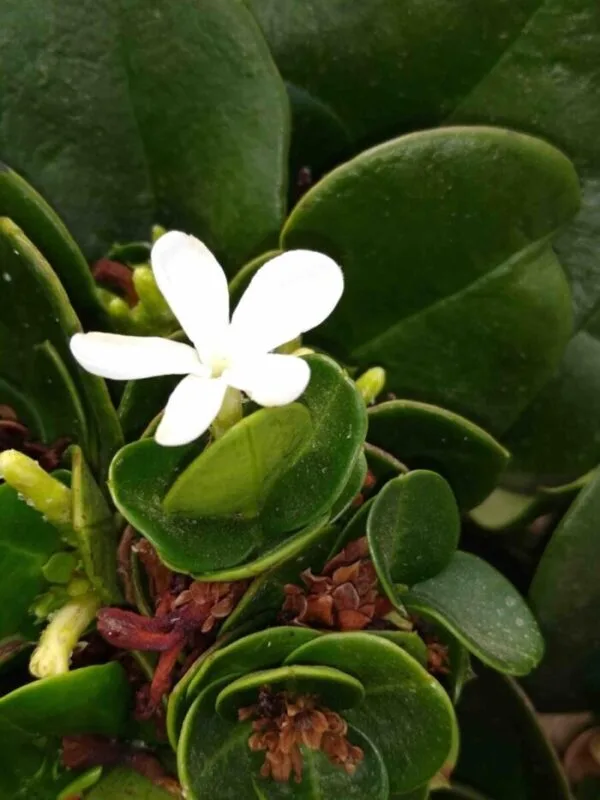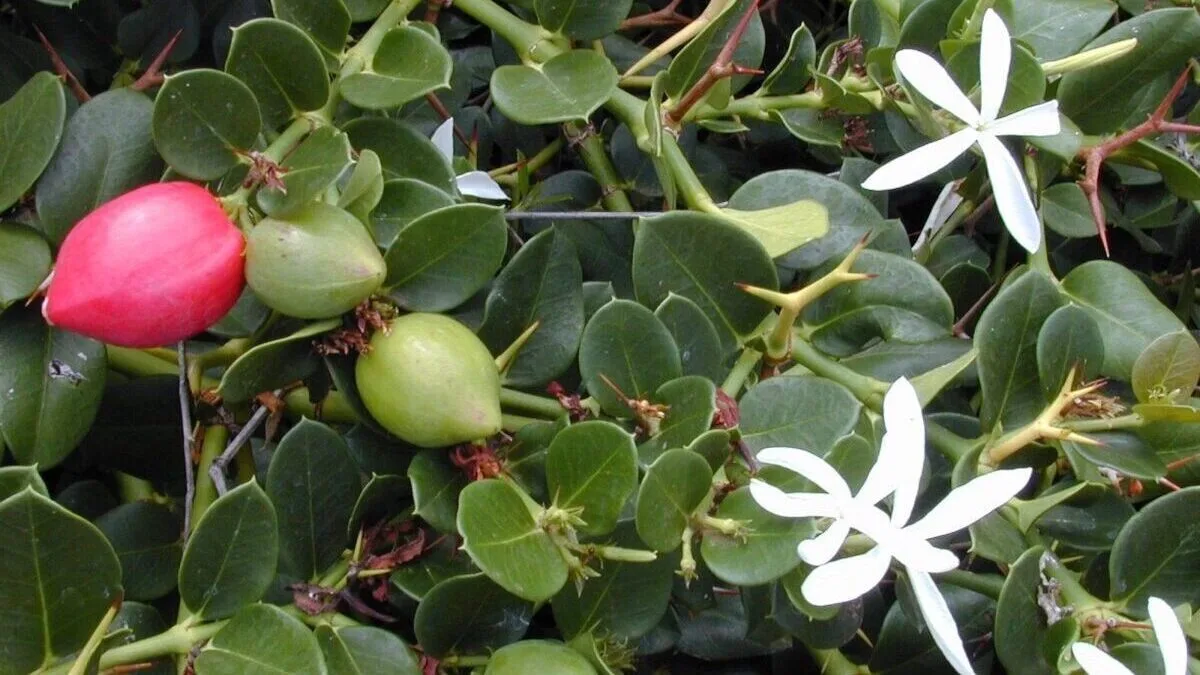Table of contents
Natal Plum Tree
The Natal plum is a pretty green shrub native to tropical and Southern Africa. The plant has lovely glossy green leaves and produces snow white fragrant flowers. It also produces a nutritious plum like fruit.
Natal Plum Varieties
- Boxwood Beauty: This is a thornless variety that is often used as a ground cover. It has white flowers and matures at about 24 inches tall and wide.
- Emerald Blanket: A low, spreading dwarf cultivar that is often used as a ground cover shrub.
- Fancy: A standard upright form with upright, large fruit.
- Nana: Thornless dwarf cultivar grows to only 12 to 18 inches tall and wide and has white flowers.
- Tomlinson: Another standard-sized thornless variety.
- Variegata: Cream to yellow variegation.
Is Natal Plum Poisonous?
This plant is related to the poisonous Oleander. Indeed the leaves of the Natal plum are toxic and should not be consumed. However, the fruit is edible.
Growing Natal Plum
You should plant your seedling in soil that drains well. Indeed this plant is known to grow well in sandy soil.
The Natal plum is forgiving of poor soil, as long as it is well-drained. While these plants prefer a slightly acid or neutral pH, they tolerate slightly alkaline soil. Consequently, they have proven to do well near coastal areas.
Natal Plum Propagation
The best way to propagate Natal plum is from cuttings.
Time needed: 4 minutes
How to grow Natal plum from cuttings.
- Take cutting
Take a tip cutting about 10cm (4in) long from your mature vine and take it back to your potting table.
- Remove bud
Cut below the second or third mature leaf on the cutting.
- Rooting Hormone
Remove what is now the first mature leaf and any tendrils or flower buds with it. Then dip the cutting into rooting hormone so the hormone touches the wounds on the stem.
- Plant in a pot.
Transplant into a small pot full or premium potting mix.
- Sun and Water
Finally, make sure your plant has heaps of sunlight and water regularly in the dry season.

Natal Plum Water
You should not need to water your plant during the wet season. For the balance of the year you should water once every few weeks, depending on the variety and soil.
However, make sure you do not overwater, because this plant is susceptible to root rot. Consequently, it is good if your soil dries out completely between waterings. Therefore good drainage is very important and remember, the Natal plum is fairly drought-tolerant.
Fertilise
You should use a fertiliser that is equal parts of nitrogen, phosphorus, and potassium. Indeed fertilising will help maintain plant health and promote fruiting.
Natal Plum Diseases
We have had no problems with pests or diseases. However, aphids can be a problem. This can be managed by applying Neem oil. Indeed this is a great organic way to keep pests at bay.
This plant can have fungal problems, but that can be avoided by ensuring you do not over-water.
Natal Plum Fruit
The plant produces small fruits. When cut, the red-fleshed interior releases flecks of milky white sap and has a juicy texture similar to a common plum. The flesh also encases brown oval-shaped seeds, each about the size of a small almond.
Natal plums emit a sweet, subtly floral scent akin to jasmine or orange blossoms and are edible raw. They taste like cranberries. Consequently they are often used in jellies and jams.
Natal Plum Benefits
A traditional food in Africa, this fruit can improve the nutrition of those who consume it.
The plum is extremely high in Vitamin C. Consequently, it is known to boost the immune system and support the health of teeth and gums. The fruit is also rich in calcium, magnesium and phosphorus.
Furthermore, the potassium in the fruit helps to regulate blood pressure and improves muscle function. In addition, the magnesium is good for your heart.
Other Tropical Fruits
- Black Sapote
- Custard Apple
- Dragon Fruit
- Grumichama
- Guava Tree
- Jaboticaba
- Kumquat Tree
- Mamey Sapote
- Mulberries
- Natal Plum
- Passion Fruit
- Paw Paw
- Rambutan
- Star Apple
- Watermelon


Comments
3 responses to “Natal Plum Growing Guide”
[…] Natal Plum […]
[…] Natal Plum […]
[…] Natal Plum […]